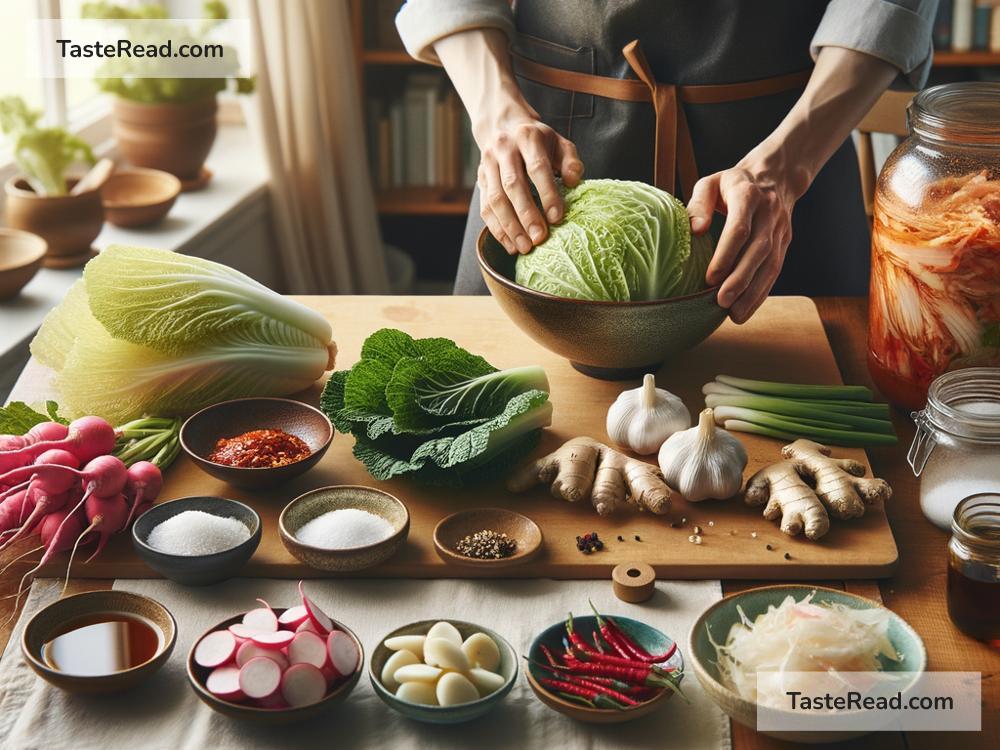Mastering the Traditional Method for Making Homemade Kimchi
Kimchi is a beloved Korean dish known for its bold flavors and incredible health benefits. It’s made through fermentation, a natural process that enhances its tangy taste while keeping it packed with probiotics. While you can buy kimchi at the store, making it at home can be a fun and rewarding experience. Plus, you get to tweak the recipe to suit your taste. In this article, we’ll walk you through the traditional method for making homemade kimchi in simple steps.
What Is Kimchi?
Kimchi is a Korean side dish made using vegetables (usually napa cabbage and radishes), salt, and a spicy seasoning paste. It’s famous for its zingy flavor—a mix of sour, sweet, salty, and spicy. The fermentation process not only deepens the flavors but also supports gut health and digestion. It pairs perfectly with rice, noodles, and meats, or can be enjoyed on its own!
Making kimchi involves three key steps: preparing the cabbage, creating the seasoning paste, and fermenting the mixture.
Ingredients You’ll Need
Here’s what you’ll need to make a basic batch of kimchi:
Vegetables:
- 1 large napa cabbage (also known as Chinese cabbage)
- 1 daikon radish (optional)
- 2-3 green onions (optional)
Seasoning Paste:
- 1 cup Korean chili pepper flakes (gochugaru)
- 2 tablespoons fish sauce or soy sauce
- 1 tablespoon sugar
- 2-3 tablespoons minced garlic
- 1 tablespoon grated ginger
- 1/2 cup water or rice porridge (explained below)
For salting the cabbage:
- 1/2 cup coarse sea salt
- Water (enough to soak the cabbage)
Step 1: Preparing the Cabbage
Napa cabbage is the star ingredient in kimchi, and how you prepare it lays the foundation for your dish. First, cut the cabbage in half lengthwise, then into quarters. You can leave the quarters intact or chop them into bite-sized pieces—it’s up to you.
Next, soak the cabbage in salted water. Dissolve 1/2 cup of coarse sea salt in enough water to cover the cabbage. Place the cabbage pieces in the brine and rub salt between the leaves to help them soften. Soaking makes the cabbage pliable and allows it to absorb the flavors later.
Let the cabbage soak for 2–6 hours. Afterward, rinse it thoroughly under cool running water to remove excess salt. Squeeze out excess water but don’t over-dry it.
Step 2: Preparing the Seasoning Paste
The seasoning paste is what gives kimchi its punchy flavor. Here’s how to make it:
-
Create Rice Porridge (Optional): Traditional kimchi uses rice porridge to help the seasoning stick to the cabbage and improve fermentation. Boil 2 tablespoons of glutinous rice flour with 1/2 cup of water, stirring until it thickens. Cool completely before using.
-
In a bowl, combine minced garlic, grated ginger, chili flakes (gochugaru), fish sauce, sugar, and rice porridge (if using). Add water if needed to create a spreadable paste.
Step 3: Mixing the Vegetables and Seasoning
Now it’s time to mix everything together:
-
Add Optional Vegetables: If you’re using daikon radish and green onions, slice the radish into matchstick strips and chop the green onions. These add extra crunch and flavor to your kimchi.
-
Wear kitchen gloves to protect your hands from the chili paste, then spread the seasoning onto each piece of cabbage. Rub the paste generously between the cabbage leaves. Make sure every bit is coated evenly.
Step 4: Fermentation
Fermentation is the magic step that transforms ordinary vegetables into kimchi.
-
Place the seasoned cabbage in a clean, airtight jar. Press it down firmly to remove air bubbles. The jar should be filled to about 75–80% capacity to leave room for fermentation gases.
-
Leave the jar at room temperature for 1–2 days to begin the fermentation process. During this time, the flavors will deepen and become tangy. You might notice bubbling in the jar—this means the fermentation is working!
-
After 1–2 days, transfer the jar to the refrigerator. Refrigeration slows down fermentation, allowing the flavor to develop gradually. You can start eating your kimchi after 3–5 days but letting it sit longer yields richer flavors.
Tips for Success
- Balance the Salt: The cabbage should be salty after soaking, but not overly so. Rinsing helps remove excess salt.
- Use Gochugaru: Korean chili pepper flakes (gochugaru) are key for authentic flavor. Regular chili powder won’t work the same way.
- Keep It Clean: Use clean jars and utensils to avoid contamination that could spoil your kimchi.
Why Make Your Own Kimchi?
Homemade kimchi lets you control the spice, salt, and sweetness levels, ensuring it suits your preferences. Plus, it’s cheaper than store-bought kimchi. The process is simple and feels like a fun science experiment. Once you master the basics, you can add other ingredients like carrots, apples, or oysters to create your own unique versions.
Conclusion
Mastering the traditional method for making homemade kimchi is easier than you think. With just a few key ingredients and some patience, you can create a flavorful dish that’s healthy and versatile. Whether you enjoy it as a side dish, use it in recipes like kimchi fried rice, or munch on it straight from the jar, homemade kimchi is a treat that your taste buds—and your gut—will thank you for.
Give it a try, experiment with flavors, and enjoy the satisfaction of making this iconic Korean dish in your own kitchen! Happy kimchi-making!


